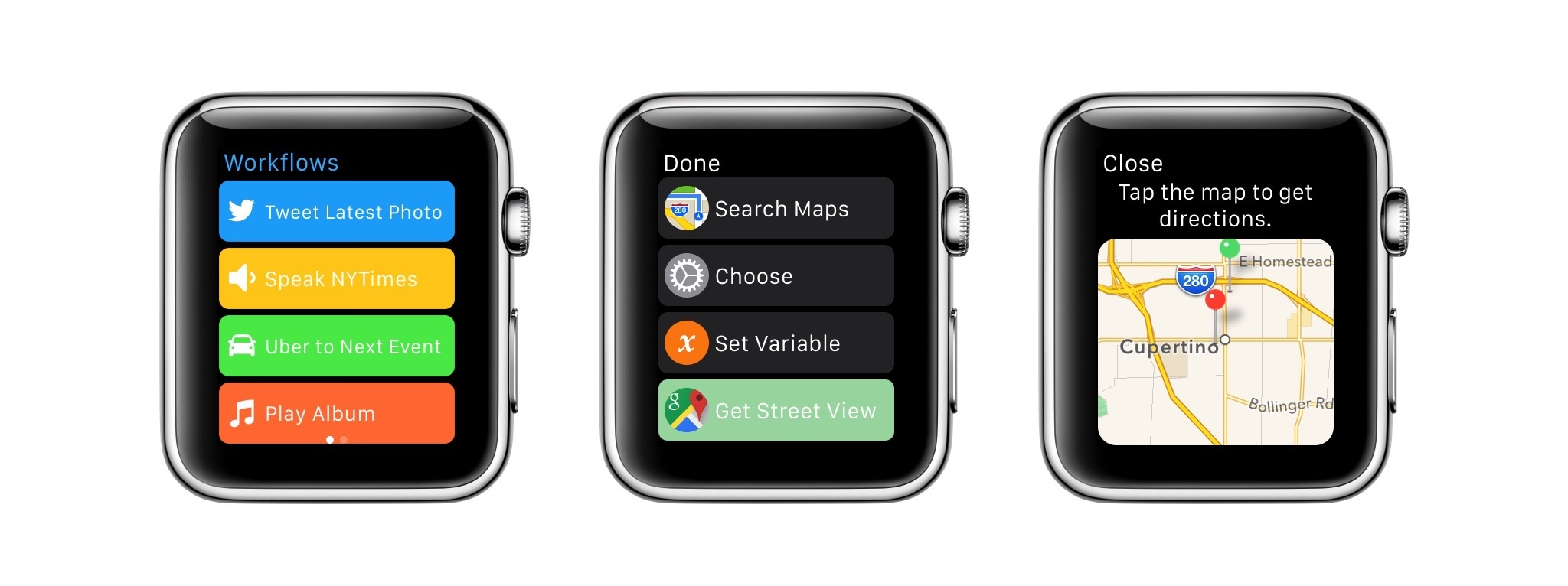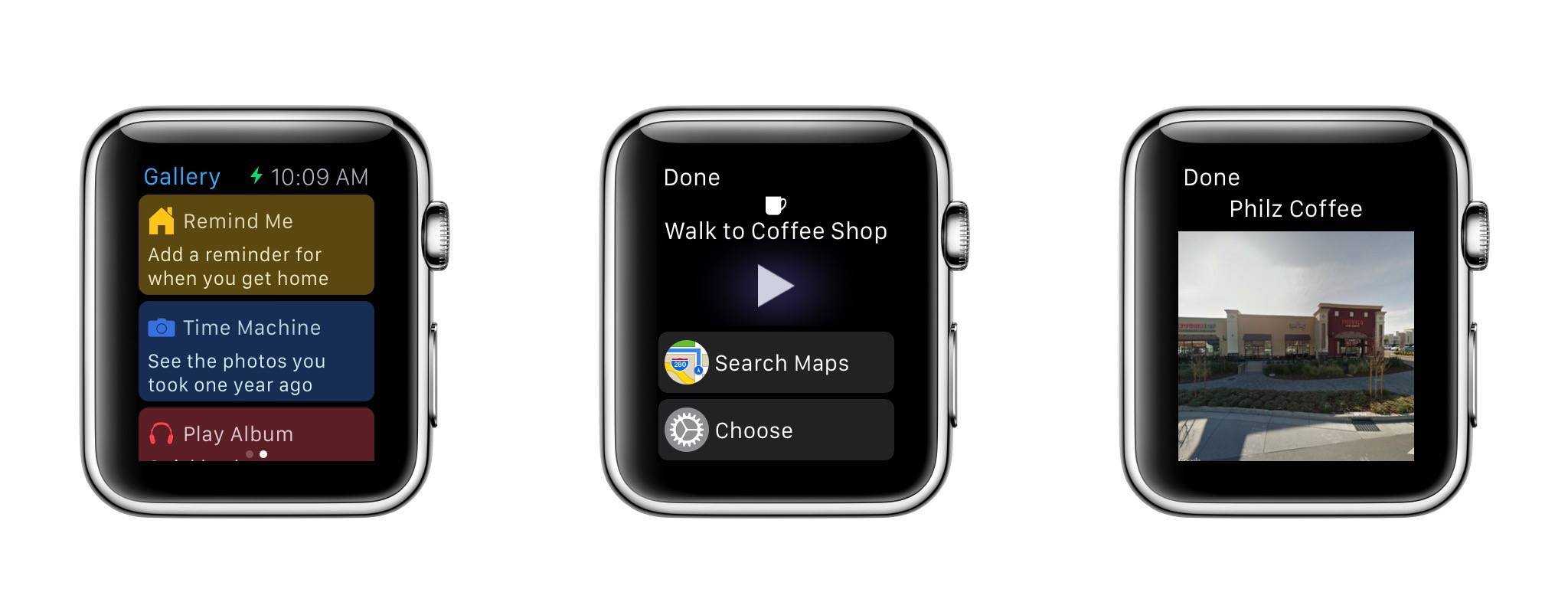After reinventing mobile automation by combining an interface reminiscent of Automator with deep integration on iOS, Workflow – one of my favorite apps of 2014 – is coming to Apple Watch. Launching today with version 1.2 of the app, Workflow will allow users to run workflows directly from their wrist, with some new features built to take advantage of communication between the iPhone and Apple Watch.
I talked to Ari Weinstein, one of the developers behind Workflow, and he told me that, first and foremost, one of their priorities has been to make sure users could run most of the app’s chains of actions from the Watch with an intuitive interface. Like other apps based on WatchKit, Workflow for Apple Watch will communicate with its iPhone counterpart, serving as a way to quickly execute workflows stored in the main app. Because of limitations in WatchKit, Workflow won’t be able to automate native Watch functionalities such as the heart rate monitor or Force Touch, but instead it’ll focus on making it easy to run workflows from a connected iPhone with just a couple of taps.
On the Watch, Workflow will get access to the same 200+ actions that allow iPhone users to create automated workflows for apps such as Maps and Reminders, or web services like Evernote and Pocket. You’ll be able, for instance, to tweet the latest photo shot on your iPhone directly from your wrist, get turn-by-turn directions for a list of specified places on the iPhone, and even speak articles fetched from the iPhone with a native text-to-speech feature. Everything has been built with convenience in mind, working around the initial limitations of WatchKit to enable users to quickly launch workflows and speed up interactions thanks to the nature of the Watch.
On the Watch, for example, Workflow will also be available as a Glance: swipe up from the watch face, tap a workflow, and it’ll be executed on the iPhone, showing its chain of actions on the Watch. All workflows created in Workflow for iPhone will work out of the box on the Watch, with no changes necessary and with only some obvious differences to consider. Due to the absence of a web browser on the Watch, workflows that require Safari will need to be executed on an iPhone, and, similarly, workflows that involve launching other apps will have to be completed outside of the Watch app. According to Weinstein, 163 of Workflow’s 226 actions can run natively on the Watch.
As a remedy to WatchKit limitations, Weinstein and team added full support for Handoff in Workflow for Apple Watch: whenever a workflow can’t be fully executed on the device, Handoff will automatically pass the task to an iPhone, which will pick up the workflow where you left off and finish running it. Additionally, third-party Watch apps won’t be able to initiate phone calls and send text messages – two other scenarios where Workflow will fall back to using Handoff with an iPhone.
For its debut on the Watch, Workflow wants to simplify access to workflows and – within the constraints of WatchKit – make it more convenient to get results from actions without having to pull out your iPhone. And while integration with third-party Watch apps won’t be possible at launch, Workflow will be capable of accessing native Watch functionality that is exposed to developers, such as Maps for directions, calendars, contacts, and more.
It’ll be interesting to see if Workflow will manage to seamlessly translate existing workflows from the iPhone to the Watch, and how, exactly, it’ll turn out to be faster than simply opening Workflow on the iPhone. The demos that Weinstein showed me were encouraging, and I believe there is – besides fun and amusement alone – clear potential in the idea of scripting apps and web services from your wrist.
We’ll have to see when the Apple Watch launches later this month. In the meantime, a teaser website is available here, and Workflow 1.2 will be available on the App Store later today.



